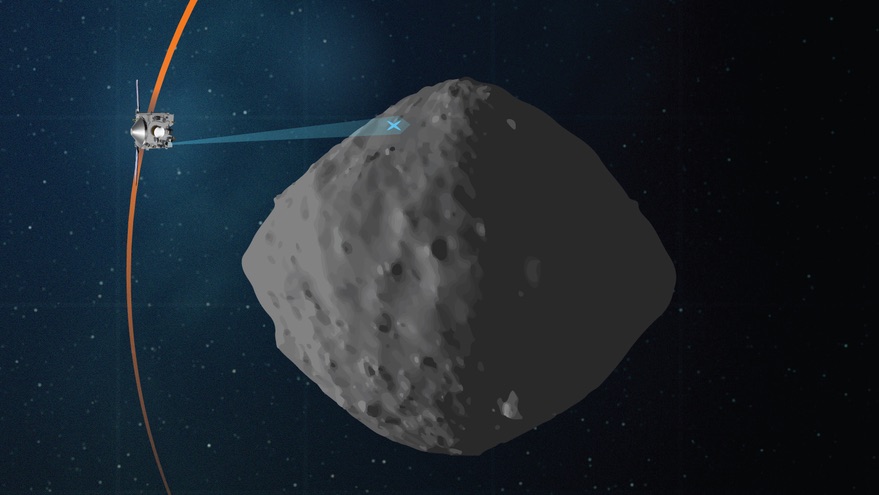
WASHINGTON — NASA’s OSIRIS-REx spacecraft will make one final close approach to the asteroid it collected samples from next week before heading back to Earth.
On April 7, the spacecraft will pass 3.7 kilometers above the location on the asteroid Bennu called Nightingale where, in October, the spacecraft briefly touched down and collected as much as several hundred grams of material, now stored in the spacecraft.
Immediately after that sample collection maneuver, the mission had no plans to return to the vicinity of Bennu. However, NASA decided to make a final pass over the touchdown site to see what changes the sampling made to the Nightingale region, like the creation of a crater.
“We sat down and did a risk assessment, and we decided it was very low risk and the science return was very important. So, we are going back to look at the site and see if we can determine the crater,” Dante Lauretta, principal investigator for OSIRIS-REx at the University of Arizona, said during a March 17 presentation about the mission at the 52nd Lunar and Planetary Sciences Conference online.
He predicted that the site should have not just a single crater but as many as five: one created by the sampling mechanism and four from thrusters on the spacecraft that fired to brake the spacecraft’s descent and pull it away from the surface. “There should be five, or some kind of cloverleaf pattern from all of that interaction with the surface,” he said.
Analysis of data collected during that Oct. 20 sampling mechanism, at the end of a robotic arm extended from the bottom of the spacecraft, went deeper into the surface than predicted. The sampling head went 48.8 centimeters below the surface before the spacecraft stopped its descent and starting moving back up.
“The surface was not slowing us down at all,” he said. “If we hadn’t fired the back-away thrusters, we probably would have sunk in meters into the surface of this asteroid, which is fascinating to think about.”
Shortly after the sample collection maneuver, images showed some material leaking out of the sampling head. That caused the mission to accelerate efforts to stow the sample collection unit in a capsule that will store it during the trip back to Earth.
“We definitely lost tens of grams of sample from the time we collected it until the time we stowed,” Lauretta said. “We’re still confident that there’s substantial amounts of material in that return capsule ready to come home.”
Because of the accelerated effort to stow the sampling head, the mission did not attempt to measure exactly how much material was stowed by spinning the spacecraft and measuring the difference in its moment of inertia from before the sampling maneuver. However, visual estimates of the sampling head suggest it contains at least several hundred grams of material. “We feel like we collected substantially more than our 60-gram requirement,” he said.
The flyby of the Nightingale site will be the last time OSIRIS-REx approaches Bennu. The spacecraft will begin its trip back to Earth May 10, arriving on Sept. 24, 2023. The capsule containing the samples will land in the Utah desert. “We’re very excited to get those samples into our labs and unravel the history of Bennu and the solar system,” he said.
"close" - Google News
April 02, 2021 at 09:13AM
https://ift.tt/39BnQwz
OSIRIS-REx to make final close approach to asteroid before heading back to Earth - SpaceNews
"close" - Google News
https://ift.tt/2QTYm3D
https://ift.tt/3d2SYUY
Bagikan Berita Ini














0 Response to "OSIRIS-REx to make final close approach to asteroid before heading back to Earth - SpaceNews"
Post a Comment